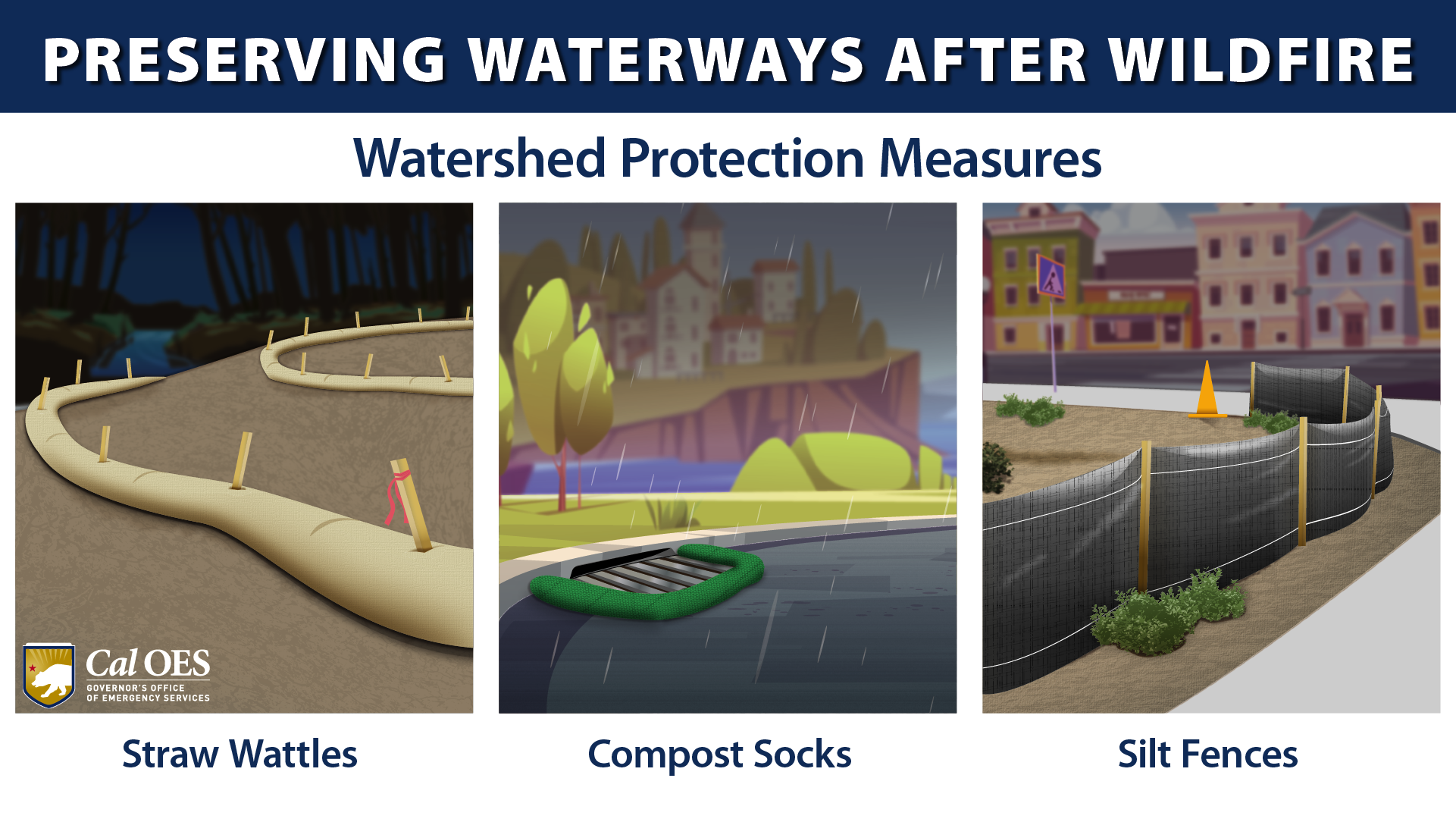During heavy rain events, stay vigilant in burn scar areas
The California Governor’s Office of Emergency Services (Cal OES) is geared up to address any potential hazards, such as mudslides, debris flows and other incidents triggered by excessive precipitation.
The Cal OES Watershed and Debris Flow Task Force is actively overseeing high-risk zones to ensure communities receive prompt emergency information in the event of debris flows. If rainfall is expected to meet dangerous thresholds, the hazards are communicated to local jurisdictions.
In preparation for heavy rainfall, Cal OES works with counties and state partners to install emergency protective measures prior to high flow events. These efforts address slope instability to protect lives and infrastructure.
The aftermath of wildfires leaves behind damaged homes and wildlife habitats but also creates a new environmental hazard – the increased risk of flash flooding, mudslides and debris flows. Charred landscapes left barren of vegetation are unable to absorb rainwater efficiently, making locations downhill and downstream from burned areas highly susceptible to secondary disasters.
In some areas where wildfires burned intensely or for an extended period, soils have developed a water-repellent layer, like rain on pavement. This hinders the absorption of rainfall, causing it to quickly run off. The loss of plant material that would normally hold the soil in place further amplifies the potential for flash floods, mudslides and debris flows.
PROACTIVE MEASURES
Before major rain events, Cal OES, along with state and federal partners, tracks weather patterns to assess which burn scars might be affected. If significant risk is identified, the Cal OES Watershed/Debris Flow Task Force communicates the risk to the State Operations Center and local jurisdictions for consideration, which can result in evacuations.
Following major wildfires, state scientists and geologists conduct assessments to evaluate for flash flood and debris flow potential in high-risk areas near communities or roadways.
Toxic runoff is also a major concern, as wildfires leave behind dangerous chemicals and toxic pollutants, particularly when significant quantities of structures and vehicles have been burned. The presence of hazardous materials combined with wet weather, decreased vegetation and denuded hillsides, creates dangerous potential for toxic runoff to persist for months, or even years after a wildfire is extinguished.
Cal OES works closely with state partners to prevent toxic runoff from entering waterways by installing physical filtration barriers. The placement of these emergency protective measures helps safeguard watersheds from the potential impacts of dangerous toxins found in wildfire ash and debris. By intercepting water flow from slopes, the barriers act as filters to remove dangerous contaminants before they can pollute the waterway.

MUDSLIDE VS. DEBRIS FLOW
- Mudslides: a type of landslide that results from the failure of a slope, and often occurs due to the accumulation of water from prolonged rainfall and/or saturated subsurface conditions.
- Debris Flows: described as a “sediment-dominated slurry,” debris flows are mostly made up of soil, resulting from short-duration, high-intensity rainfall events.
- A mudslide is a localized slope failure, while a debris flow is a runoff event, such as a flash flood, that entrains sediment from a broad area.
- Debris flows and mudslides can occur many years after wildfires. Both happen fast, so heed evacuation warnings immediately.
RESOURCES:
- Listos California Disaster Ready Guide
- Tips for Staying Safe in Severe Storms
- Power Outage Tips
- Generator Safety
- Food Safety in a Power Outage
- QuickMap
- CalAlerts.org

